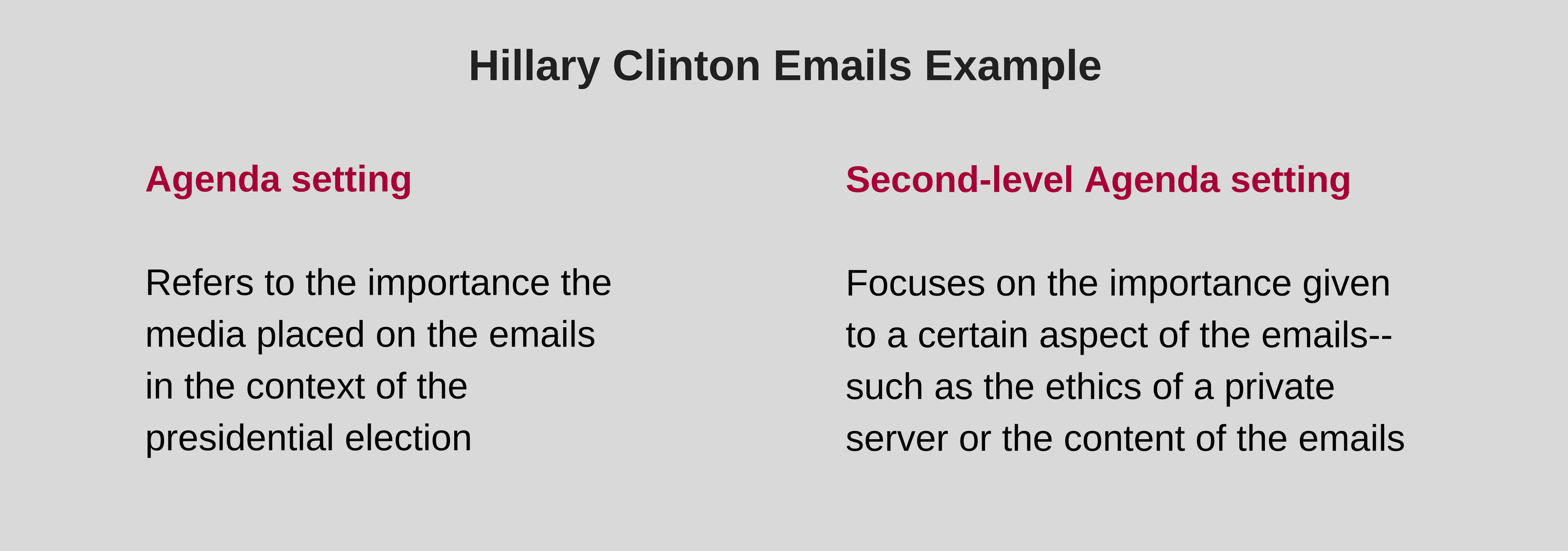Second-level Agenda Setting
An offshoot of the original agenda-setting paradigm is called “second-level agenda setting.” While agenda setting explores the macro processes of media’s shaping of public opinion—by highlighting the issues that are more or less important for public attention—second-level agenda setting explores which aspects of a certain issue should be considered more or less salient. For example, (and admittedly offered as a very rudimentary example) during the summer and fall of 2016, we heard almost non-stop media coverage regarding “Hillary Clinton’s emails.”
Agenda setting would tease out the importance media placed on how much we should think about those emails in the context of the presidential election; is it more or less important to think about the topic of Hillary’s emails compared to the topic of the domestic economy, foreign policy, or human rights? Diving deeper, second-level agenda setting, then, would focus on the salience given to a specific aspect of Hillary’s emails. Is it more important to think about the ethics of having a private email server or should we focus instead on certain email content? Similarly, if, media had decided it was more important to think about the economy than emails, second-level agenda setting argues that we also can look to media for guidance regarding which aspect of the economy should be most salient to consider when forming our opinions (unemployment, GDP, stock market, etc.).

So, the media are powerful. They might not tell us necessarily what to think (whether we should choose A vs. B), but they do play a strong role in telling us what to think about (that A and B are indeed the two most important things to ponder), and which aspects of those topics are important in coming to our conclusions. In other words, media set the public agenda. As practitioners, it is important therefore to understand and respect this role. We can learn a lot about what our publics might consider to be more and less topically salient, and what that might mean for our own communication priorities. Accordingly, understanding the specific tools and techniques regarding how media frame our news, helps us—in turn—understand how media influence the public agenda.
Next Page: Media Framing